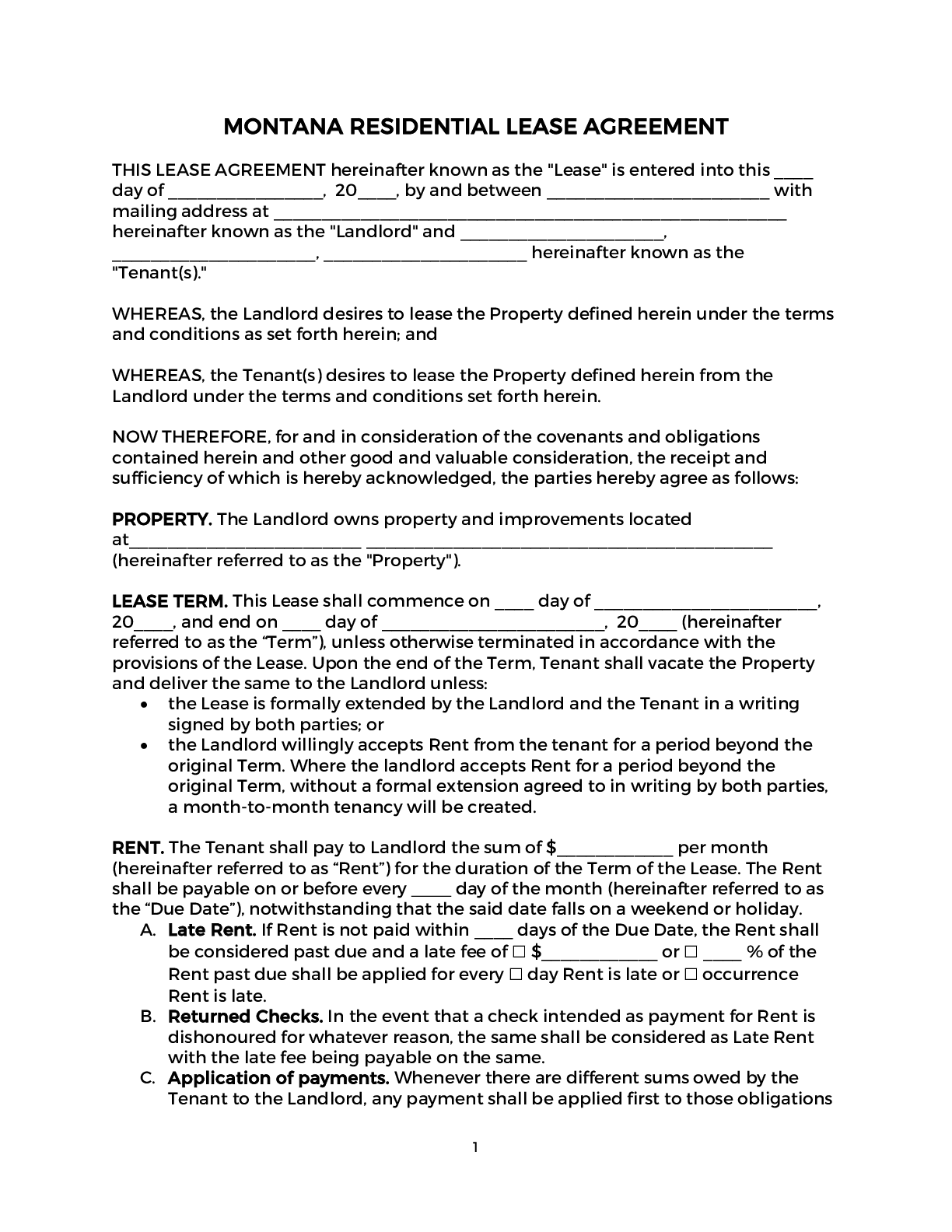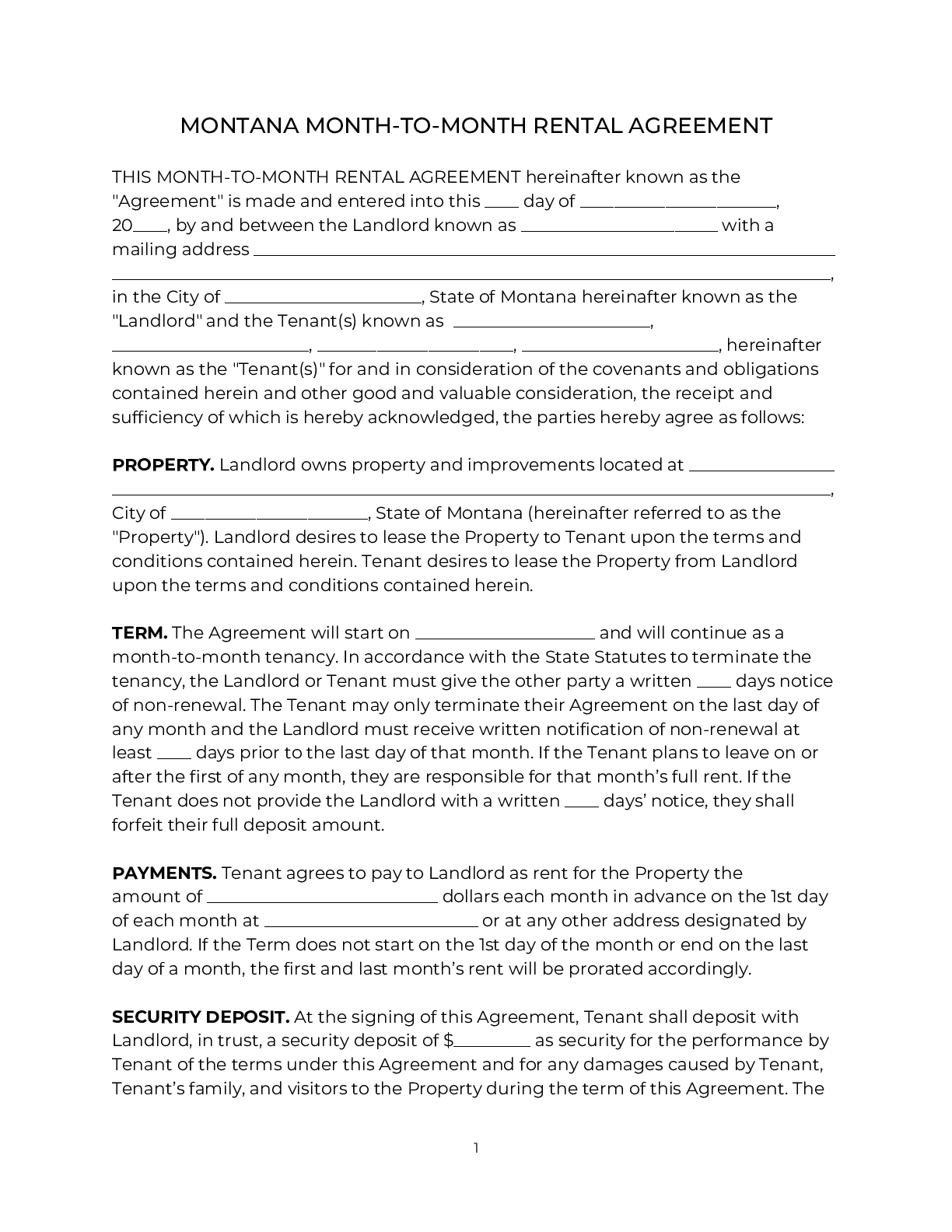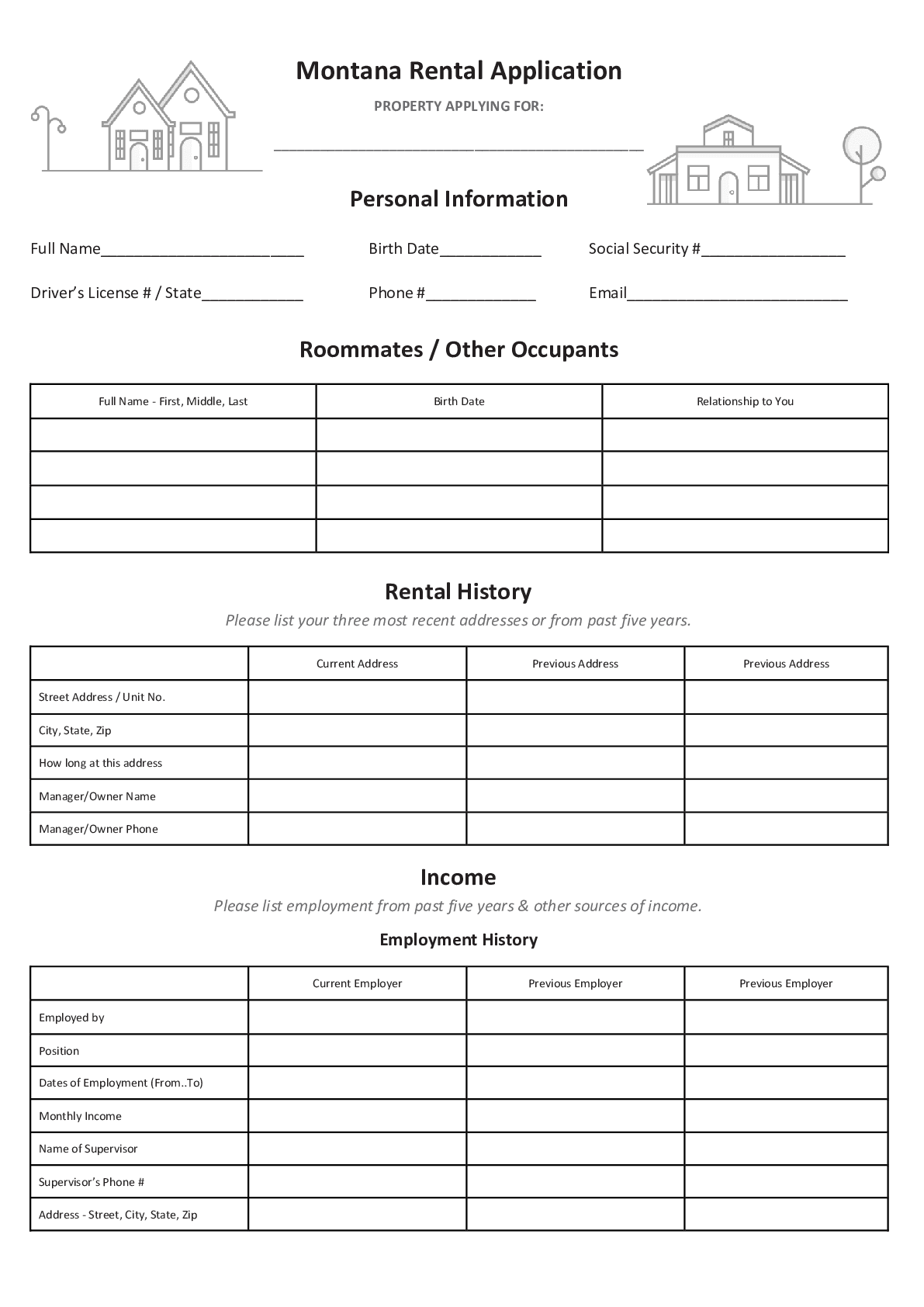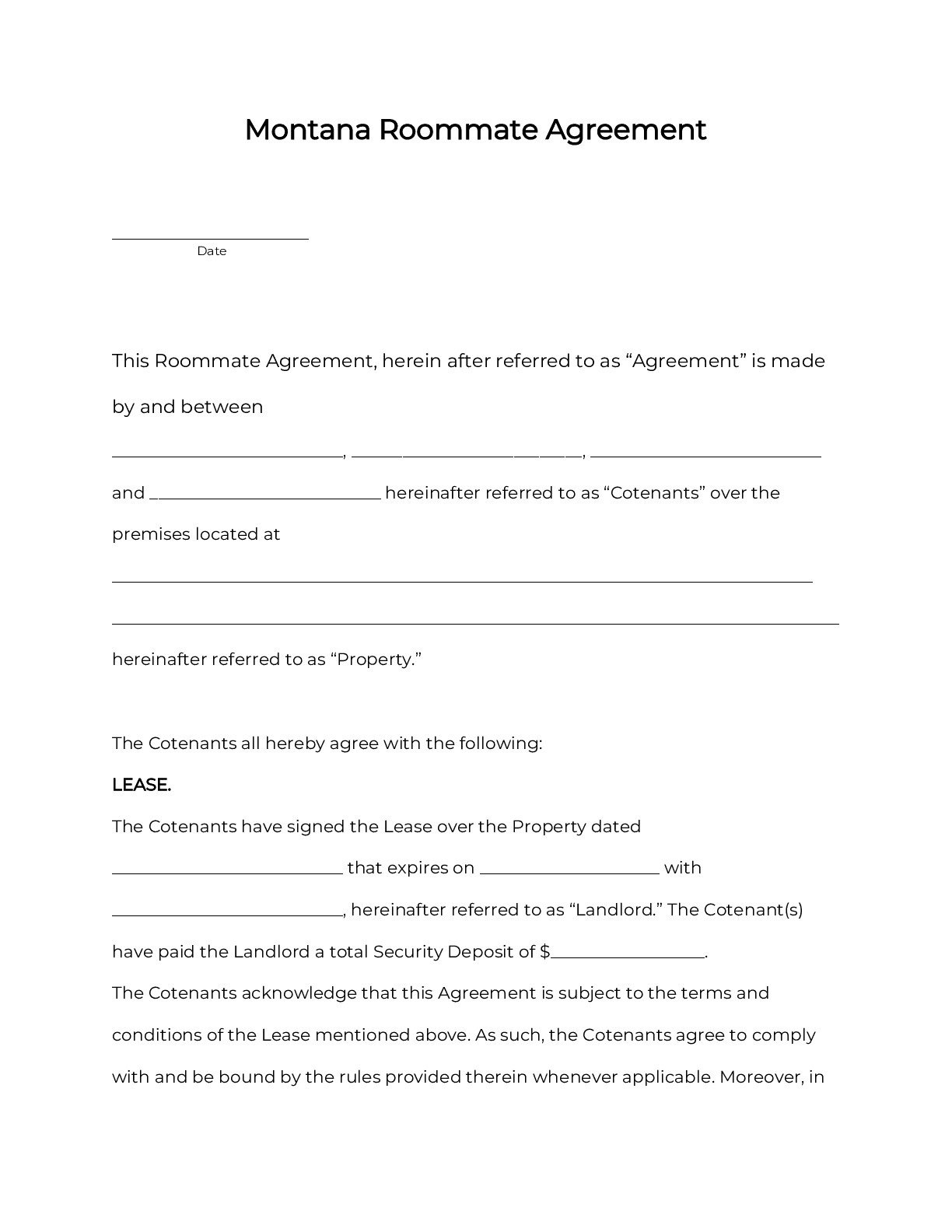A Montana rental agreement is a legal contract between a landlord overseeing a rental property and a tenant who wishes to use it. Montana landlord-tenant law governs these agreements; rental terms must be within the limits allowed by law.
Montana Rental Agreement Types
A Montana roommate agreement is a legal contract between two or more people (“co-tenants”) who share a rental property according to rules they set, including for things like splitting the rent. This agreement binds the co-tenants living together, and doesn’t include the landlord.
Montana Required Lease Disclosures
- Landlord’s Name and Address (required for all leases) – Montana leases must contain the name and address of the landlord or authorized agent. This enables smooth communication of any important legal notice.
- Move-In Checklist (required for some leases) – Montana landlords can only charge a security deposit if they include a move-in checklist itemizing any existing property damage, so the tenant can take proper inventory when moving out.
- Mold Disclosure (required for some leases) – Montana leases must provide a statutory disclosure for any property with mold contamination.
- Methamphetamine Contamination Disclosure (required for some leases) – Montana leases must disclose any known contamination the manufacture or use of methamphetamine on the rental property.
- Lead-Based Paint Disclosure (required for some leases) – For any property built before 1978, federal law requires that a Montana residential lease must contain a lead-based paint disclosure with an EPA informational pamphlet, plus notice of any lead hazards on the property.
To learn more about required disclosures in Montana, click here.
Montana Landlord Tenant Laws
- Warranty of Habitability – Montana landlords can only rent out habitable property, which means providing certain features essential to basic health and safety. This includes things like heat, plumbing, electricity, and sound structural elements. Landlords must repair any issues within 14 days after proper notice from the tenant (3 days, for emergency issues). Failure to repair lets a tenant sue the landlord, terminate the lease, or repair and deduct from the rent. Tenants in Montana aren’t allowed to withhold rent.
- Evictions – Montana landlords may evict for rent default, lease violations, or illegal acts, among other things. Before filing eviction, landlords must serve tenants with prior notice to pay, comply or quit, depending on the eviction type. This means most evictions in Montana take between a few days to a few weeks.
- Security Deposits – Montana does not put a maximum cap on the amount a landlord can charge for a security deposit. Landlords have 10 days after a tenant moves out to return any unused portion.
- Lease Termination – Montana allows month-to-month tenants to break a lease with 30 days of advance notice. A fixed-term lease can’t be terminated early without active military duty, landlord harassment, uninhabitable property, or domestic abuse.
- Rent Increases and Fees – Montana does not put a maximum cap on rent increases, but landlords must provide at least 15 days of advance notice. Late fees have no maximum cap, but bounced check fees are limited to $30 per instance.
- Landlord Entry – Montana landlords may enter rental property for purposes reasonably related to the tenancy, like maintenance, inspections, and showings. They must provide at least 24 hours of notice before entering, unless it’s an emergency situation.
- Settling Legal Disputes – Montana allows small claims court to decide landlord-tenant issues, including evictions, as long as the amount in controversy is under $7,000. Most landlord-tenant disputes are contract issues, which have a 5-year statute of limitations (3 years, for oral contracts).
To learn more about landlord tenant laws in Montana, click here.








